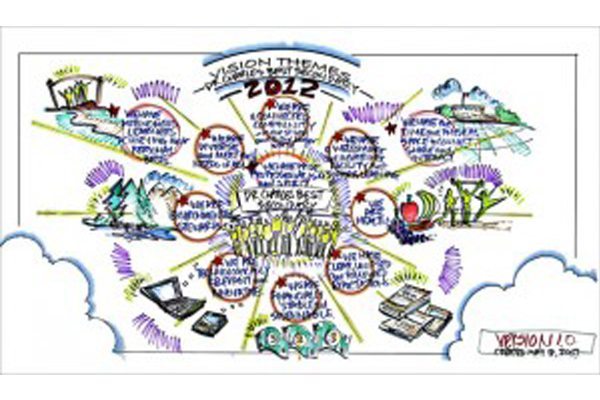First things first. How do we define a “large group”? Any group that has more than around 30 people can be safely categorized under this nomenclature.
Managing conversations even in a small group is hard enough, when you think about it. Every group has its share of bullies who hog most of the time available. Then there is the Extrovert-Introvert equations that plays out. Add to that a fiercely competitive corporate environment, where – “to be heard”, becomes so important – and we can see why the very mention of “meetings”, gives people headaches.
So, its not surprising really that when organizations sometimes plan meetings where an even larger group of people need to come together to discuss, debate and thrash out a few outcomes – there is a huge dose of skepticism that accompanies such an exercise. Yet, as teams get larger and leaders increasingly want to co-opt their larger teams in reaching outcomes – such exercises are inevitable.
Basis our own experience in facilitating many such large group interventions, here are a few things that you as a leader / facilitator at such a meeting could keep in mind, to manage such meetings:
1) Co-opt the leader of the group: What does he want to achieve out of this meeting?
If you are an external Facilitator, always have a detailed discussion with the group leader much beforehand, to understand his priorities. The objectives as stated by the person co-ordinating the meeting and the objectives as stated by the leader can often be of different shades. Without a doubt, align completely with the leader’s objectives.
2) Clarify the goal & boundary conditions: What are we targeting – how much time do we have?
This seems redundant, afterall doesn’t every person coming to a meeting know why they are coming there? Our advise to the facilitator is – when in doubt, clarify. It maybe that people know the goal – in which case, there is nothing lost in reiterating the same. But maybe, just maybe – there are many in the group who are still wondering, what the meeting is all about. When a leader / facilitator kicks off the meeting by clarifying the objective: it ensures that everybody is gunning for the same goal. So, to reiterate – a good way to start a large group meeting is to welcome everybody and then state: “What we are all here today is for……. and we have around 5 hours to get there ”.
3) Clarify the process: How are we going to get there? What are the milestones?
Far too often, while participants are clear on the overall objective, what they still grapple with and look towards the facilitator for is – a clearly defined path towards the objective. What are the different steps or stages that will take us there? How will each of our inputs be taken in and assimilated? Before diving into the process, a facilitator would do good, to state this explicitly: “How we are going to go about this today is…… We will first start with…… and finally we will conclude with…… “
4) Facilitate very tightly
One constant question that every Facilitator grapples with is about how much of freedom he gives his participants in terms of flexibility on time. Especially when facilitating senior teams, there is always a risk that relevant discussions may get cut short if the facilitator is too rigid on time given for discussions. The converse is true for large groups. If the facilitator is not rigid about the time deadlines given – there is a big risk of losing control. When this happens, some smaller groups can hijack the whole process by not following the process laid out. And in large groups, when one smaller group does that and gets away, it is seen as a license for the other groups to also flout the agreed upon process. This is a perfect recipe for chaos. Once a large group meeting descends to this stage, it becomes very difficult for the Facilitator to regain control. A whistle and a stop watch are two handy and must have tools for a Facilitator in such circumstances. Voice modulation is another important tool.
5) Budget sufficiently for the breaks
Far too often, we have seen aggressive leaders wanting to pack in as much working time as possible, chewing into the break times – i.e time kept aside for the tea breaks and lunch. There are two issues here: One – unrealistic time budgeting. For example if a 80 people group has to have lunch and be back, budgeting 30 minutes for that is unrealistic – people will invariably come in late and throw the process off the timelines. The second issue is of not understanding people dynamics sufficiently. If the discussion is of an intense nature, long stretches of “work time” – without proper breaks given for people to relax and ventilate, can lead to boredom, irritation and people mentally signing out of the process. Your idea as a Facilitator is to take people along – not burn them out. Plan accordingly.
Are there any other things that a Facilitator must be mindful of, from your experience? Do share.




